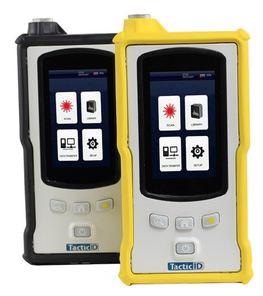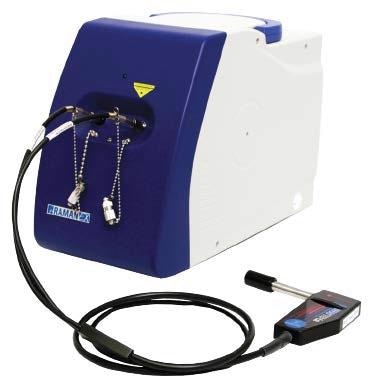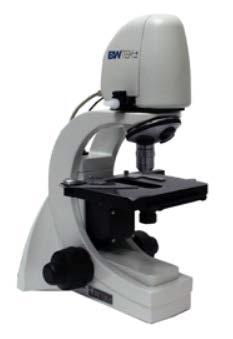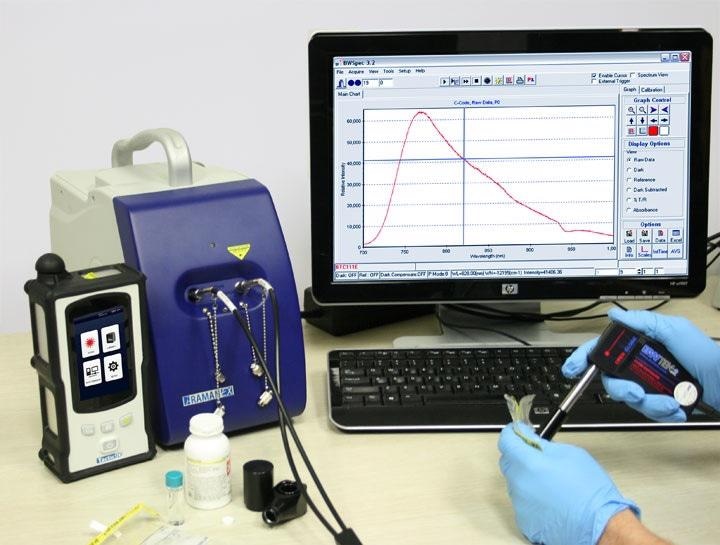Identification and verification of forensic samples pose a major challenge to crime scene investigators, lab technicians, law enforcement personnel, and many others. During forensic analysis, technicians have to regularly check materials like hair sampling, residue of gun powder, chemical precursors, drugs of abuse, etc.
Previously, technicians employed several forms of identification to obtain results from different forms of forensic samples. While some technologies are suitable for precise lab identification, most technologies, including Raman spectroscopy, can be effectively used for rapid detection of different types of forensic samples either in the laboratory or directly in the field.
Overview of Raman Spectroscopy
Raman spectroscopy is known to be a proven and ultra-sensitive analytical method and is suitable for studying slurries, liquids, and solids. Raman is a vibrational spectroscopic technique, which is extremely sensitive to atomic vibrations in molecules and can be employed for compound identification.
Another vibrational spectroscopy technique is infrared (IR) spectroscopy. For many years, both IR and Raman techniques have been employed in forensic labs, due to their low false alarm rates and high specificity.
Specific to a material’s chemical structure, Raman spectroscopy can be used to identify samples in a nondestructive manner. This provides a major benefit over other techniques.
Drugs of abuse and other organically-based chemical compounds contain molecules that vibrate at distinct frequencies. The frequency and number of these vibrations are based on the number of atoms present in the chemical compound and the way these atoms are linked through particular chemical bonds.
The Raman spectra or vibrational frequencies will be different, because the types of atoms, the number of individual type of atom, and the relationship between the atoms vary between chemical compounds, for example methamphetamine vs cocaine. Raman spectroscopy exploits this difference in the vibrational frequencies of each compound to distinguish the compounds.
TacticID 785 nm Handheld Raman System
The TacticID is a portable, field-based narcotics identification Raman system that can quickly detect a host of explosives, narcotics, etc., all in a matter of seconds, for each test. It is also suitable for bulk sampling pharmaceutical drugs, hazardous materials, precursors, cutting agent, etc.

Figure 1. TacticID 785nm handheld Raman system
The TacticID system uses Raman spectroscopy to provide the high chemical specificity of Raman in a non-contact, non-destructive way. This reduces exposure of law enforcement officers to unidentified materials and at the same time maintains the proof’s original state.
Also, a large number of narcotic samples can be rapidly detected in their original packaging by just pressing the sample inside a container (for example a plastic bag) against the analyzer’s sampling tip and then pushing the scan button.
The TacticID 785nm handheld Raman system offers a clear and definitive result, without any need for user interpretation. All scans are stamped with the date and time and automatically stored in the analyzer.
Through the intuitive user interface, law enforcement personnel can effortlessly send the information from the handheld unit to a PC for automated storage and reporting. A diagnostic self-check system is integrated in the analyzer to validate if the system is operating correctly at the time of use and whether it can support the series of custody for prosecution with printable and permanent records.
i-Raman EX 1064 nm Fiber Optic Portable Raman System
The i-Raman EX is a handheld Raman system suitable for forensic analysis, such as biological samples, pharmaceutical material analysis, narcotics, bioscience/biomedical diagnostics, explosive detection, food and agriculture, petroleum analysis, etc.
It is an extension of B&W Tek’s award winning i-Raman portable Raman spectrometer, which includes a 1064 nm version of the company’s patented CleanLaze® excitation laser.

Figure 2. i-Raman EX 1064nm fiber optic portable Raman system
The portable Raman spectrometer is integrated with an ultra-sensitive InGaAs array detector with high dynamic range and deep TE cooling, which helps to deliver an optimal signal-to-noise ratio without causing any auto-fluorescence. As a result, a variety of biological samples can be measured.
The i- Raman EX system offers an excellent spectral resolution at 9.5 cm-1 and a spectral coverage ranging from 250 to 2500 cm-1, allowing users to determine the whole fingerprint region. The system has a lightweight design, small footprint, and consumes minimum power, providing research-grade Raman capabilities anywhere, anytime.
The i- Raman EX system can be employed with an XYZ positioning stage probe holder, video microscope, a cuvette holder, and B&W Tek’s proprietary BWIQ multivariate analysis software. A fiber optic probe is provided with the system as standard.
The i-RamanEX provides a highly precise quantitative and qualitative forensic solution.
BAC151B Raman Video Microsampling System for i-Raman EX
The Raman microscope, BAC151B can be used with the i-Raman EX system for forensic analysis, and was built to provide a high level of flexibility to enable Raman sampling for a wide range of applications. The BAC151B system can be configured to meet specific application needs.
Additionally, the built-in camera enables precision Raman sampling via camera monitoring of the laser beam and imaging details.

Figure 3. BAC151B Raman video microsampling system
When the BAC151B system is combined with the i-RamanEX, it offers the benefits of a Raman microscope at just a fraction of the cost compared to other research-grade instruments. The video head can be conveniently mounted on a tripod, which is provided as an accessory.
i-Raman EX for Heroin Identification
Heroin is a popular drug in almost all parts of the globe and has become increasingly popular among numerous social classes who earlier preferred ecstasy and cocaine drugs. Today’s handheld instruments, including the TacticID, use a 785 nm wavelength, but fail to detect common street heroin, due to its impurity from excess material cutting and natural high fluorescence.
The i-Raman EX has a longer 1064 nm wavelength, and is not restricted by the fluorescence issue often related to the identification of heroin using Raman spectroscopy. It is suitable for accurate and specific detection of all types of heroin, spanning from extremely diluted black tar street samples to pure samples.
Conclusion
B&W Tek’s i-Raman EX and TacticID Raman systems with the microscope accessory serve as a powerful identification tool that can detect a host of samples that are often found during forensic investigations.

Figure 4. B&W Tek’s i-Raman EX and TacticID Raman systems
Earlier, these types of Raman spectrometers were limited to large form factors in laboratories, but now both systems deliver clear, definite results in the lab or in the field in a lightweight and user-friendly form factor.
Users can leverage this forensic suite to bring lab-proven forensic identification systems anywhere, anyplace. This will ultimately lead to better productivity without affecting the equipment or methods’ quality.

This information has been sourced, reviewed and adapted from materials provided by B&W Tek.
For more information on this source, please visit B&W Tek.